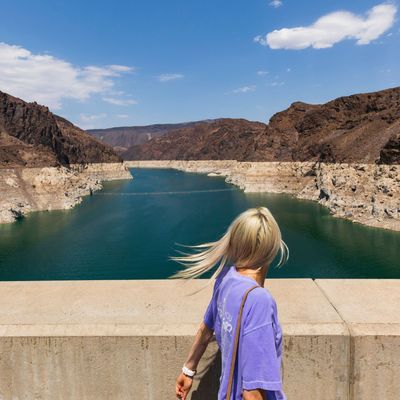
Water levels at Lake Mead, the vital reservoir formed by the Hoover Dam, hit an all-time low as a crippling drought exacerbated by rising temperatures due to climate change took hold of the West, the Guardian reports.
According to a report from the U.S. Bureau of Reclamation, Lake Mead’s water level has ducked to 1,068.55 feet above sea level, leaving the largest reservoir in the United States about 35 percent full. Overall, the reservoir has fallen 140 feet since 2000, according to the Washington Post. Lower water levels don’t just strain water supply but also the dam’s electric capacity: “Every foot of lake level decline means about 6 [megawatts] of lost capacity,” a spokesperson for the Bureau of Reclamation told CNN.
“We’ve known this point will arrive because we’ve continued to use more water than the river provides for years,” Kathryn Sorensen, a water-policy expert at Arizona State University, told the Guardian. “Things look pretty grim. Humans have always been good at moving water around, but right now everyone will need to do what it takes to prevent the system from crashing.”
Drought conditions are expected to continue through the summer, threatening the water supply for about 40 million people living in the Southwest, including dozens of tribes. Plunging water levels will likely trigger states that depend on the reservoir to implement water-saving measures. In August, officials will determine whether to declare a water shortage prompting automatic cuts in water usage in several southwestern states, the Washington Post reports.





























